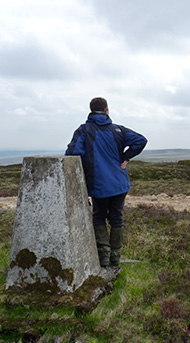Final report of the Langholm Moor Demonstration Project (2008-2017)
The Langholm Moor Demonstration Project today published its final report, which reflects on some of the successes and challenges faced in managing moorland for game and wildlife conservation.
DOWNLOAD REPORT
The partners set out to establish whether the moor could be recovered as a national and local asset, supporting grouse populations for driven grouse shooting; birds of prey in an internationally important protected area for hen harrier; and to deliver other wider biodiversity. The project explored different approaches to management that might be of benefit to Scotland’s moorlands and deliver positive outcomes for society.
The project was a partnership of Buccleuch, Scottish Natural Heritage (SNH), Game & Wildlife Conservation Trust (GWCT), Royal Society for the Protection of Birds Scotland (RSPB) and Natural England (NE). The project was funded by these bodies, along with rural development support from the Scottish Government.
This report is being published at a time critical for moorland policy, when Scotland and the UK are facing many questions about upland land use. A case for support will need to be made for moorland management derived “public goods” such as biodiversity and mitigation of climate change.
To this end, parts of the project were markedly successful: addressing decades of heather loss, the subsidised grazing removal and gamekeeper management recovered overgrazed moorland and reduced predation on ground-nesting birds, including wading birds, allowing some recovery of their populations. The project also provided insight for thousands of visitors into raptors’ relationships with prey, the rate of recovery of heather habitats from grazing pressure and the economic cost of maintaining heather moors.
Despite a grouse population recovery in some years, the gamekeeper management which brought these positive outcomes could not be afforded in the long run. This was because the grouse did not breed sufficiently well in enough years for there to be the shooting that would achieve the chosen economic return. The report explores the possible reasons for this and the implications for current and future moor funding and management in detail.
Mark Oddy, speaking for the project hosts Buccleuch, said: “Buccleuch was proud to be part of this important project. As an estate business with sporting interests, it was heartening to see the environmental and conservation benefits of moorland management highlighted. Clearly, many challenges lie ahead in ensuring these benefits can continue but this report underlines the fact that moorland management has a positive and substantial contribution to make in preserving our cherished moorland for the future.”
Ross Johnston, Deputy Director of Sustainable Development at SNH, commented: “This report is being published at a critical time, with the climate emergency and biodiversity loss high on the agenda.
“The report shows the strength of partnership working in tackling key wildlife management issues. The project delivered some recovery of wader bird populations, supported important rural jobs, allowed many visitors to enjoy seeing hen harriers and other raptors in an attractive setting and has produced many important scientific publications.
“We also now know that driven grouse moor management is difficult in the face of rising predation pressure – much of it due to historical land use changes such as habitat loss and, at Langholm, neighbouring forestry harbouring predators.
“We await Professor Werritty’s report and its recommendations on driven grouse moor management. The partnership has endured over many years and is a credit to all involved.”
Website
This website is being maintained so that the former partners can continue to pass on information of general interest and to host the project reports. Our News page will carry key updates.
Work update
The partners agreed that as of January 2018 the activities the Project delivered as a business were complete.
Through 2018 and 2019 partners will continue to collaborate on analysing and publishing reports on the project work. Some partners are individually continuing elements of monitoring.
Reports
The ‘7 year’ interim report can be found here.
The final project report will be available from this website in 2019.
Papers published
Papers published by the partners cover buzzard diets, the abundance and breeding success of hen harrier and red grouse. These and more papers as they are published can be found in the publications section.
Monitoring
Interesting and useful monitoring results will be published on an ‘ad hoc’ basis by partners – please check the news pages here. |


